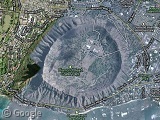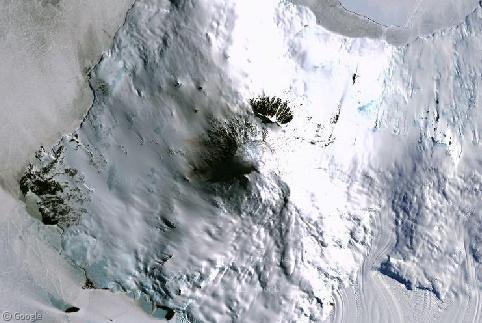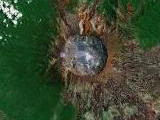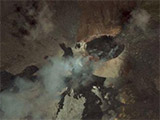The Wrekin – a false volcano (Volcano week 6)
Tuesday, 23rd August 2011 by David Nicol
The 400 metre hill known as the Wrekin is a familiar landmark across Shropshire. An isolated peak amid flat farmland, the Wrekin is visible from many miles away, and a popular belief has developed among Salopians (footnote: a Salopian is a native of Shropshire) that it is an extinct volcano. It is easy to see how this idea developed: from certain angles, the Wrekin does have the appearance of a volcanic cone.
Even from other angles, which reveal its true shape, the Wrekin still seems to be an aberration in the landscape: it emerges abruptly from the surrounding plain, as if it had erupted from the earth.
Sadly, geologists tell us that the Wrekin is not a real volcano, although it was formed from volcanic rock hundreds of millions of years ago. Still, the view from the summit is spectacular, and you don't even need to leave your sofa to see it, since the Street View cameras have made it to the top:
As an isolated peak, the Wrekin was a perfect vantage point for the Cornovii, an Iron Age tribe who built a hillfort on its summit. The fort was ultimately destroyed by the Romans, who had built the city of Viroconium close to the hill. The Roman city's ruins can still be seen today, and it is easy to imagine how threatening the Wrekin must have looked to the soldiers garrisoned there (A.E. Housman evoked that idea beautifully in his poem A Shropshire Lad).
The Wrekin's claim to volcanohood may be unfounded, but Salopian folklore provides a better explanation for its peculiar nature. Legend tells that a giant once stomped toward Shrewsbury, carrying a mound of earth on his spade with which he intended to destroy the city. Meeting a cobbler, who was carrying a sack of shoes for repair, the giant asked how far it was to Shrewsbury. The wily cobbler opened his sack and said "So far away that I've worn out all these shoes since I left". Demoralised, the giant gave up and dumped the earth upon the ground … thus forming the Wrekin. The giant is honoured by an enormous fibreglass statue in Telford Town Park. You can glimpse him through these trees...
However it got there, the Wrekin has become a symbol of the local area, and it was once traditional at Salopian gatherings to offer a toast to "all friends round the Wrekin"!




Does the London Underground extend to Shropshire? And, if it does, do the locals call it the “Salopian Tube?”